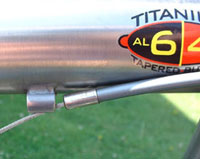Brake Adjustment
While bicycle brakes offer excellent stopping power, over time the cables may stretch, the brake pads wear and a pad might drag on the rim. Because your safety depends on optimum braking, we’ve prepared these guidelines for common adjustments to ensure that your grippers are always at their best. |

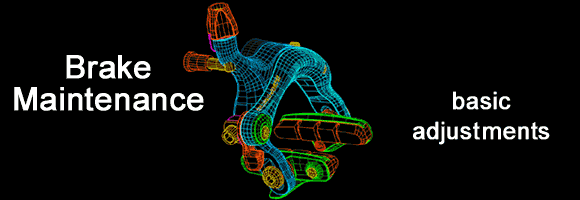
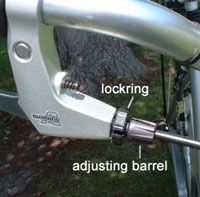 handy device called an adjusting barrel (photo).
handy device called an adjusting barrel (photo).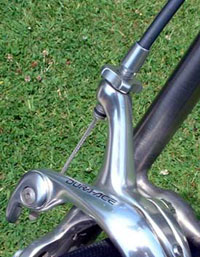 the brakes, turn the adjusters in the direction that moves the pads closer to the rims.
the brakes, turn the adjusters in the direction that moves the pads closer to the rims.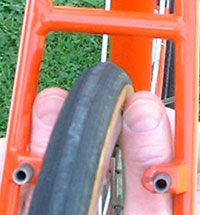 centered between the seatstays and chainstays before tightening it. You can do this by looking at it or use your fingers as “feeler gauges” by sliding the same finger on each hand between the frame and rim or tire feeling if it’s centered (photo; the brake was removed so you can see the details).
centered between the seatstays and chainstays before tightening it. You can do this by looking at it or use your fingers as “feeler gauges” by sliding the same finger on each hand between the frame and rim or tire feeling if it’s centered (photo; the brake was removed so you can see the details).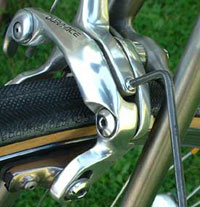 move sideways when you push it).
move sideways when you push it).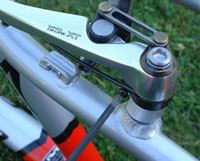 turns of this screw (photo right) will move the pad in the arm with the screw away from the rim and vice versa.
turns of this screw (photo right) will move the pad in the arm with the screw away from the rim and vice versa.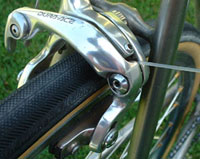 rubbing alcohol.)
rubbing alcohol.)